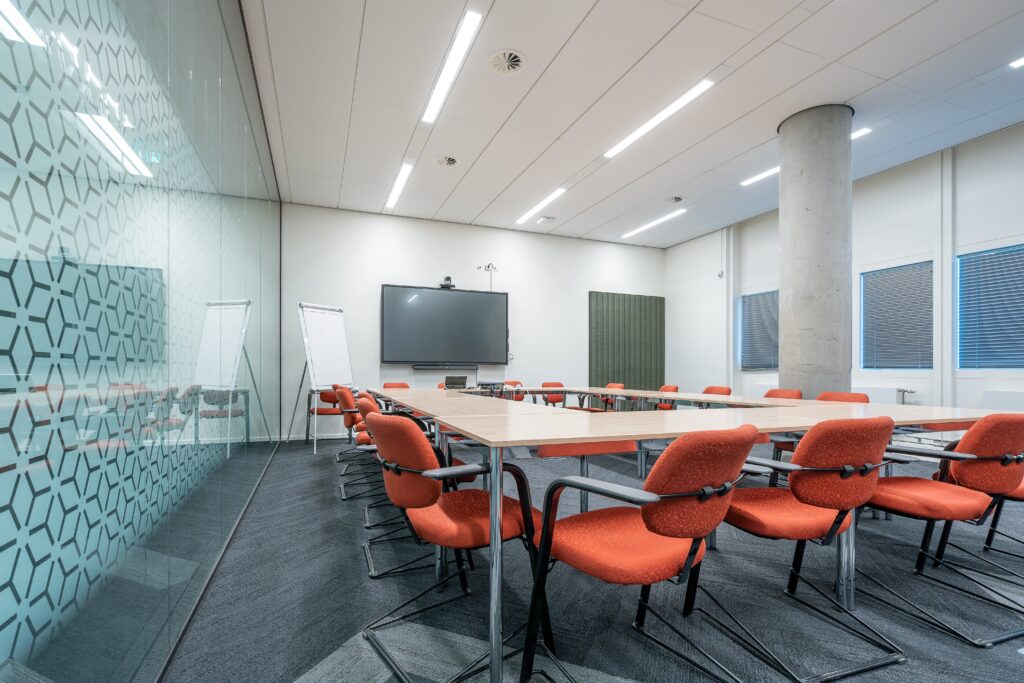In digital communication, startups and established businesses are seeking the most efficient ways to equip their conference rooms with efficient audio and video. With the dual necessity of accommodating both Microsoft Teams for internal meetings and Zoom for client-facing interactions, selecting the right hardware becomes a critical decision.
The Dual Compatibility Challenge
The primary challenge lies in finding a setup that seamlessly integrates with both Microsoft Teams and Zoom. Given the distinct functionalities and requirements of each platform, achieving interoperability without compromising on the quality of communication is paramount.
Microsoft Teams Rooms (MTR) vs. Zoom Rooms
Both Microsoft Teams Rooms and Zoom Rooms offer solutions designed to enhance meeting experiences, making them interoperable in their “room” configurations. This interoperability is crucial for businesses that rely on both platforms for their internal and external communication needs.
Cost Considerations
When it comes to cost, MTR offers a more affordable monthly subscription compared to Zoom Rooms. However, the initial hardware investment for MTR might be higher, unless opting for fully built Zoom solutions. This cost-benefit analysis is crucial for startups and businesses looking to optimize their investment in conference room technology.
| Feature | Microsoft Teams Rooms (MTR) | Zoom Rooms |
|---|---|---|
| Interoperability | Can join Zoom meetings with a near-native experience, but not as seamless as within MTR. | Can join Teams meetings with a near-native experience, but not as seamless as within Zoom. |
| Setup Complexity | Fully wired solution, requiring the controller to be wired into the computer. | Easier to set up; can be DIY with an Intel NUC (or similar) and an iPad. |
| Operating System | Primarily Windows-based, but there is also Teams Rooms for Android. | Supports Android or iPad OS for the controller. |
| Hardware Cost | Generally higher, unless opting for fully built Zoom solutions. | Can be lower if opting for a DIY setup; fully built solutions might increase the cost. |
| Content Sharing | Interoperability does not allow content sharing if using webRTC experience. | Not explicitly mentioned, but implied to be more seamless than MTR. |
| Recommended Use | More suited for heavy internal use within an organization. | More suited for meetings with external clients, due to ease of setup and use. |
| Device Mode | Requires a computer in the conference room for optimal use. | Can operate independently of a computer, making it more versatile for different setups. |
| Additional Equipment | For a computer in the room, a high-end camera/microphone like a Poly x50 in device mode is recommended. | Not specified, but the ease of setup suggests a wide range of compatible devices. |
| Remote and Panels | A rooms remote can run on both Android and iOS devices. Teams panels can run on any device. | Controller typically runs on Android or iPad OS, offering flexibility in device management. |
Interoperability and Limitations
While both Zoom Rooms and MTR setups allow for participation in meetings hosted on the other platform, there are limitations. The interoperability is based on a WebRTC experience, which does not support content sharing if a computer is used in the conference room. This limitation underscores the importance of considering the specific needs of your meetings when choosing between a dedicated room system or a more flexible setup using high-end cameras and microphones, like the Poly x50 in device mode.
Expanding Compatibility
Teams Rooms is also available for Android, broadening the compatibility and device options for Teams users. This flexibility ensures that regardless of the chosen platform, there are solutions available to meet the diverse needs of businesses today.
Conclusion
Choosing the right hardware for conference rooms that accommodate both Microsoft Teams and Zoom requires a careful consideration of your company’s internal and external communication needs, budget constraints, and the desired ease of use. Whether opting for a Microsoft Teams Rooms setup for its integration and cost-effectiveness or a Zoom Room for its flexibility and ease of setup, the goal remains the same: to facilitate seamless, efficient, and productive meetings in today’s hybrid work environment.


